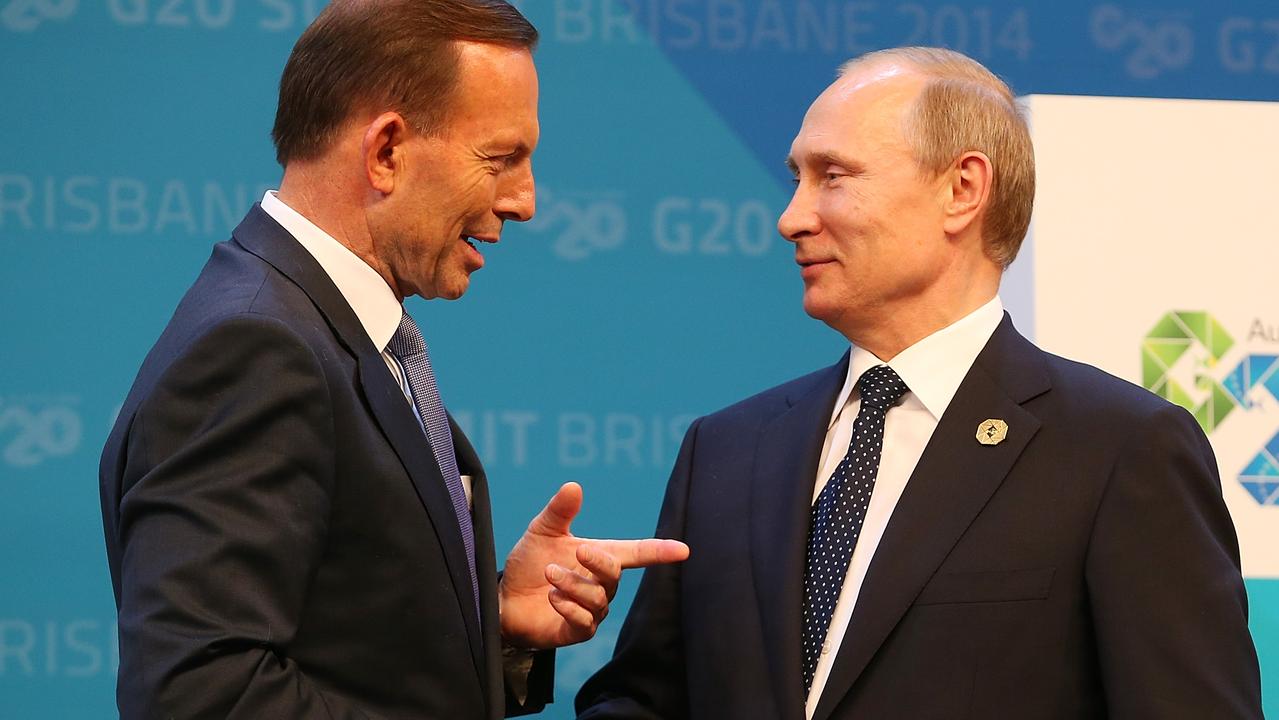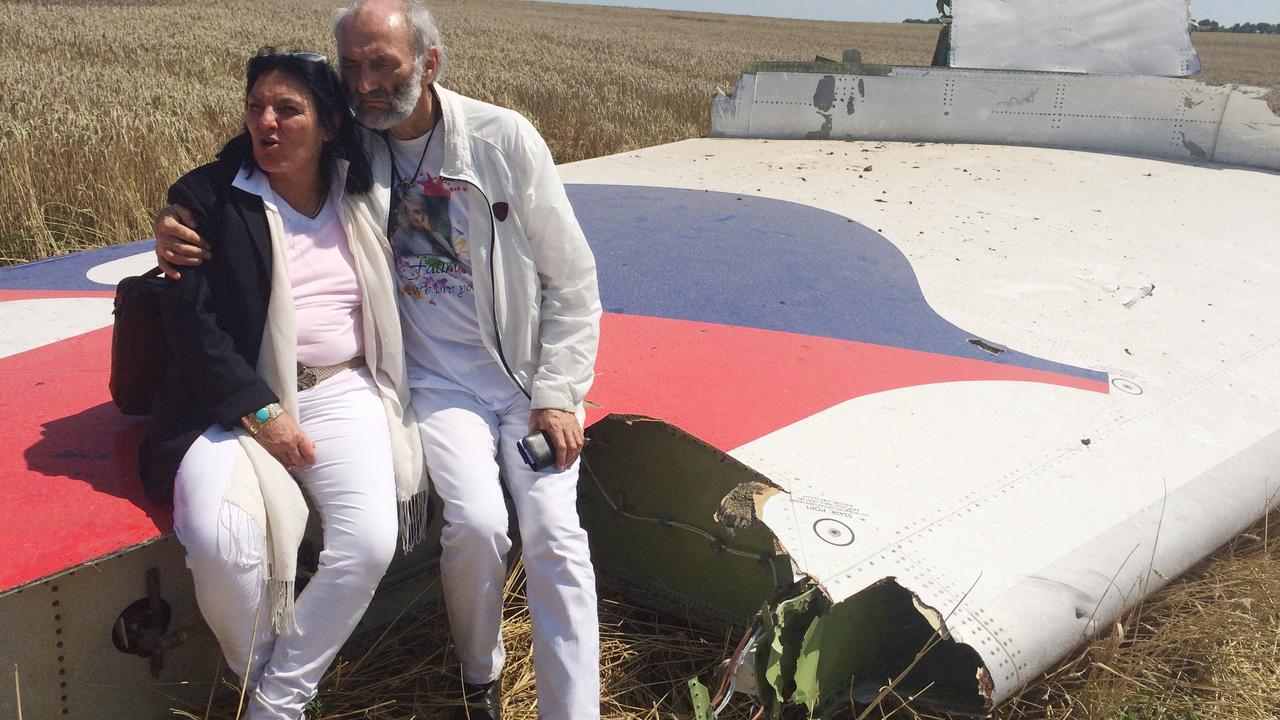Weighing up the risks in a savage Ukrainian war zone like no other
THE scores of elite Australian police and servicemen in the eastern Ukraine city of Donetsk are truly heading out on a limb.

THE scores of young elite Australian police and servicemen gathered in the eastern Ukraine city of Donetsk, which has for months been in the hands of the same separatists accused of destroying the Malaysia Airlines jet, are truly heading out on a limb.
The unique agreement struck by the Ukrainian parliament allows for 250 armed men — who cannot travel under the banner of the Australian Defence Force — to enter a savage war zone on a mission unlike any other.
It is not peacekeeping, war, or the extraction of imperilled citizens from trouble spots — it is an attempt to secure and salvage a small patch of far-flung foreign ground, where lies whatever is left of the plane, burning in the fields after catching alight from scorching weaponry.
In providing this armed support, Australia is so far going in alone.
The undertaking carries significant risks as preparations are made to finally secure the site so that Dutch, Australian and Malaysian investigators can get to work reclaiming the dead, of whom 80 or so are estimated still to be lying uncollected in the rolling fields of Ukraine near the Russian border.
Australia has said it will not put any of its team in harm’s way, but there can be no guarantee of safety so long as Ukrainian troops and the rebels fighting to break from Ukraine continue hammering each other with artillery and missiles near the wreckage.
Australian Federal Police commander Brian McDonald, in the small team that made the first sortie to the site on Thursday after almost a week of heavy fighting, said he heard no shelling when they spent an hour in the area.
It was not easy to get there. It took them six hours winding through backtracks and checkpoints to reach the place, only 80km from Donetsk.
Before they arrived, and immediately after they left, there was withering fire from both sides. And this was during a period when the UN imagined it had reportedly secured a 24-hour ceasefire.
Australia, The Netherlands and Malaysia want this mission to succeed. Operation Bring Them Home is a genuine effort to give some measure of resolution to the families of those 298 people who were shot from the sky.
Best intentions aside, the area is now the scene of a war different to anything seen in Europe for more than a decade: not passing street battles with automatic weapons but full-blown artillery and missile bombing.
Foreign Minister Julie Bishop said her preference was that armed Australian personnel not routinely accompany the investigators to the site carrying weapons, in order to demonstrate peaceful intent.
And yesterday, as a team of 60 — including 38 AFP officers — headed to the site to begin the first serious work, there were no arms in sight, as Commander McDonald wants to play it.
But the area is riddled with combatants who are not going to stand down if one side seeks to test the other’s resolve while the team is at work. The Australian personnel have been granted the right to use lethal force in self-defence and will need to be at their coolest best if they choose to work at the site in coming days or weeks.
With no sign of imminent peace in this so-far unnamed war, the strange and brutal series of events that have afflicted the tragedy — from the gruesome stacking of bodies on to trains to the outrageous looting — are by no means past their worst.
We are witnessing stubborn Australian political resolve, backed by the arrival of elite young professionals who will do what is asked of them.
A day before the agreement being struck in Kiev, the mission looked hopeless.
There were mutterings that Australia and the Dutch would get out to the crash site, take a quick look, then leave.
That was an underestimation.
Ms Bishop has stuck at it, and Tony Abbott’s promise to “try, try, try again” (which at times looked to be an effort in appeasing the Australian public) can now be assessed as unaffectedly genuine.
The Ukrainians have howitzers, tanks, cannons and Grad missiles banked up on the north side of the plane wreckage, pointed at enemy positions to the southeast. That is, right over the crash zone.
It is incredibly dangerous and growing worse.
The rebels, who have helped the foreigners in attempts to reach the site, are going to be constantly rethinking whether the help they have been providing is to their benefit.
They are offering help to the very people who accuse them of shooting the jet down. And Ukraine wants to obliterate the rebels. In short, don’t expect wholesale intensive investigative work to start on the site just yet.
Donetsk is where the foreigners are based and if the city comes under siege, as many expect, they will need to extricate themselves and find a new base.
The problem for the site investigators is that the rebels appear to have been joined by battle-hardened veterans from regional conflicts, on the payrolls of silent benefactors who have agendas beyond helping the Donetsk People’s Republic.
The US administration, watching the war from the skies in real time, claims weapons are still crossing the Russian border to support rebels. Ole Solvang, an emergencies researcher from Human Rights Watch who has spent three years in Syria studying the types of weapons deployed and the damage caused, has arrived in the Ukraine war to study the same.
Solvang is a ballsy compiler of hard technical evidence, gathered not from web reports but first-hand study. In the Ukraine case, he says, both sides are using Grad (Russian for “hail”) missile systems that are fitted with 40 missile tubes that can dispense their payload in 20 seconds.
The problem with Grads, says Solvang, is they can be fired from 20km and are inaccurate when launched in volleys and devastating on civilians when used to target enemy positions in urban areas.
Towed artillery cannons and tanks are also being used, though Solvang has reserved judgment on claims by Russia that Ukraine has been using phosphorous bombs that burn and kill to clear rebel-held towns in the east.
This is the world that the armed personnel from Operation Bring Them Home have entered.
Good temperament, good sense and the ability not to be distracted by the war that is raging around them will be needed.


